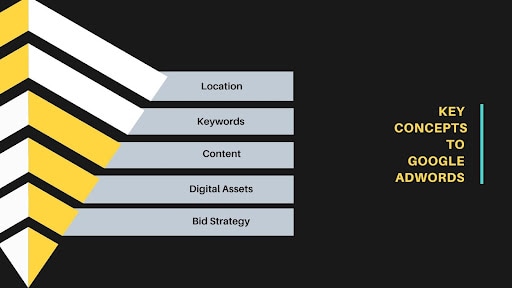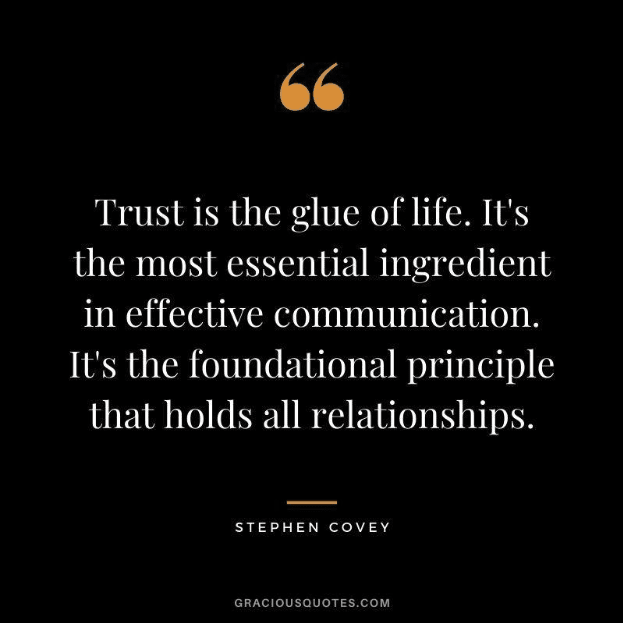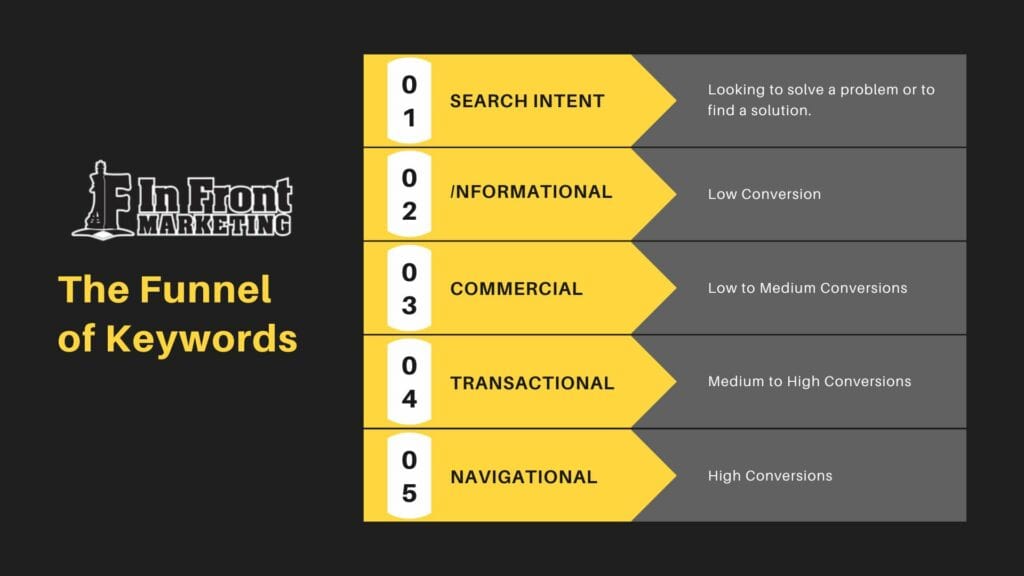Discover practical tips to help you boost your customer base as a small business owner. Learn how to identify your target audience, create data-driven marketing strategies, enhance your visibility and focus on organic growth.
This blog post also explores effective ways to reach your target audience, improve website traffic and engagement, measure marketing campaign success, track leads and conversions, and choose between paid and organic advertising. Find out how you can apply these strategies to increase your customer base and achieve business growth.
As a digital marketing agency, we understand the challenges that small business owners face in marketing.
One of the biggest concerns is how to increase their customer base effectively. In this blog post, we will provide actionable tips to address this pain point.
The first step in increasing your customer base is identifying your target audience. Without a clear understanding of who your customers are, it is difficult to create a marketing strategy that resonates with them.
Conduct market research to gather information about your target audience’s demographics, psychographics, and behavior. This will help you create buyer personas that represent your ideal customers.
Once you have a clear idea of who your target audience is, you can tailor your marketing messaging, channels, and tactics to reach and engage them effectively.
Another pain point that business owners have in marketing is managing their time and expenses. Creating a data-driven marketing strategy can help you optimize your time and resources by focusing on tactics that generate the best results.
By analyzing your data and metrics, you can identify which channels and campaigns are driving the most leads, conversions, and revenue. This will enable you to prioritize your efforts and allocate your budget and time accordingly.
Addressing business owner’s marketing concerns with data-driven strategies can help you increase your customer base, improve your ROI, and optimize your time and expenses.
By conducting market research, creating buyer personas, and analyzing your data, you can gain clarity and insights into your target audience and marketing performance.
These insights will enable you to create a strategy that resonates with your audience and generates a consistent flow of cash and leads for your business. As a digital marketing agency, we are committed to helping small business owners solve their marketing challenges and achieve their goals.
Once you have a clear understanding of your target audience, it’s time to create a marketing strategy based on data and results.
This involves leveraging agency knowledge to create a comprehensive plan that addresses your concerns and pain points. We can help you save time by developing and executing a strategy that works.
Another important factor to consider is organic growth. Rather than relying on paid advertising, you can focus on creating valuable content that attracts potential customers to your website. This approach can help you build a loyal customer base that trusts your brand and is more likely to make a purchase.
To increase your customer base, you need to have better ROI. This means focusing on strategies that generate leads and improve your cash flow.
By addressing your concerns about expenses and finance, you can create a marketing strategy that helps you achieve your goals without breaking the bank.
Finally, improving your visibility is essential to increasing your customer base. This can be achieved through a combination of SEO, social media, and evaluating your data with campaign optimization.
Effective Ways to Reach Your Target Audience
As a digital marketing agency, we understand that reaching your target audience is crucial for the success of your business. Here are some of the most effective ways to do so:
- Define your target audience: Before you can effectively reach your target audience, you need to know who they are. Define their demographics, interests, behaviors, and pain points. This will help you tailor your marketing messages to resonate with them.
- Use social media: Social media platforms like Facebook, Instagram, and LinkedIn provide an excellent opportunity to reach your target audience. Create engaging content, use hashtags, and run targeted ads to increase your visibility.
- Invest in SEO: Search engine optimization (SEO) is optimizing your website to rank higher in search engine results pages (SERPs). By using relevant keywords and providing valuable content, you can attract more organic traffic to your site.
- Use email marketing: Email marketing is a great way to reach your target audience directly. Segment your email list based on demographics and interests, and send personalized messages that address their concerns and pain points.
- Collaborate with influencers: Influencer marketing is a popular way to reach your target audience through trusted individuals in your industry. Identify influencers who align with your brand values and work with them to promote your products or services.
By implementing these strategies, you can increase your visibility, generate more leads, and ultimately grow your business. As a Calgary marketing agency, we can help you address these challenges and provide clarity on your data.
Techniques to Improve Traffic and Engagement
As a digital marketing agency, we understand the challenges that business owners face in marketing their products and services. One of the most significant challenges is improving website traffic and engagement. In today’s digital age, a website is the face of your business and the primary source of information for your target audience.
Thus, it is essential to have a website that not only attracts visitors but also engages them. In this blog post, we will share some effective techniques to improve your website traffic and engagement.
Define Your Target Audience
One of the biggest mistakes business owners make is not clearly understanding their target audience. It is essential to identify your target audience and tailor your website content to meet their needs.
By understanding your target audience, you can create content that resonates with them and encourages them to engage with your website.
Improve Your Website’s Visibility
Having a well-designed website is not enough if it is not visible to your target audience.
Search engine optimization (SEO) is a technique that helps improve your website’s visibility on search engines. By optimizing your website for keywords relevant to your business, you can improve your website’s ranking on search engines and drive more traffic to your website.
Create Content That Engages Your Audience
Creating engaging content is the key to keeping your website visitors interested and encouraging them to stay longer.
Ensure that your website content is relevant, informative, and easy to read.
Use images and videos to break up large blocks of text and make your content more appealing.
Measuring the Success of Marketing Campaigns
As a digital marketing agency, one of the most common questions we receive from business owners is how to measure the success of their marketing campaigns.
After all, with so many different metrics to track and analyze, it can be difficult to know which ones truly matter when it comes to achieving your goals.
The first step in measuring the success of your marketing campaigns is to clearly define your goals and KPIs (key performance indicators). This will help you determine which metrics are the most important to track, based on your specific objectives.
For example, if your goal is to increase leads and sales, you may want to focus on metrics such as website traffic, conversion rates, and sales revenue.
On the other hand, if your goal is to improve brand visibility and awareness, you might prioritize metrics such as social media engagement, brand mentions, and website bounce rate.
Once you have defined your goals and KPIs, you can begin tracking and analyzing your data using tools such as Google Analytics, social media analytics, and email marketing software. Look for trends and patterns in your data, and use this information to refine your marketing strategy and tactics.
It’s also important to remember that measuring the success of your marketing campaigns is not a one-time event. You should regularly review your metrics and adjust your approach as needed to ensure that you are consistently moving towards your goals.
Measuring the success of your marketing campaigns involves:
- clearly defining your goals and KPIs,
- tracking and analyzing your data,
and using this information to refine your strategy.
By taking these steps, you can gain clarity on what is working and what isn’t, and make data-driven decisions that help you achieve better ROI and business growth.
At In Front Marketing, we understand the challenges small business owners face when it comes to marketing. Time management, financial impact, and leveraging agency knowledge are just a few of the pain points that can hold you back from achieving your goals.
That’s why we are committed to providing tips and solutions that address these concerns head-on.
Ashley Reutlinger, Strategic Success Manager
For example, one of the most common pain points we see among business owners is cash flow. Many businesses struggle to balance expenses and revenue, especially when it comes to marketing.
That’s why we work with our clients to create marketing strategies that are not only effective but also cost-efficient.
By focusing on organic growth and targeted campaigns, we help our clients achieve better results without breaking the bank.
Proven Methods for Tracking Conversions
As a digital marketing agency, we understand the importance of tracking leads and conversions for businesses. It’s essential to have a clear understanding of where your leads are coming from and how they are converting into paying customers.
In our marketing calls, we discuss the best methods for tracking leads and conversions, which can help you increase your sales and revenue.
1. Use Google Analytics: Google Analytics 4 is a powerful tool our In Front Marketing team uses as it that allows you to track your website’s traffic, including where your visitors are coming from and what pages they are visiting. By setting up goals and tracking conversions, you can also see which of your marketing efforts are generating the most leads and conversions.
2. Implement Call Tracking: Call tracking is a valuable tool for businesses that rely on phone calls as a primary source of leads. By using a call tracking service, you can track the source and quality of your phone leads, and even record conversations for quality control and training purposes.
3. Utilize CRM software: Customer Relationship Management (CRM) software is an excellent tool for managing your customer data, including lead generation and conversion tracking. By integrating your CRM with your website and other marketing channels, you can get a comprehensive view of your customers and their interactions with your business.
4. Implement UTM tagging: UTM tagging is a handy tool for tracking the effectiveness of your marketing campaigns. By adding UTM parameters to your URLs, you can track how visitors from specific channels interact with your website and which campaigns generate the most leads and conversions.
By using these methods for tracking leads and conversions, you can gain valuable insights into the effectiveness of your marketing efforts. You can also identify areas that need improvement, make data-driven decisions, and adjust your strategy to optimize your marketing performance.
As a result, you can increase your customer base, improve your cash flow, and enhance your overall business visibility and success. Tracking leads and conversions is crucial for any business owner who wants to stay ahead of the competition and achieve their marketing goals.
By implementing the right tools and strategies, you can address your concerns about time management, financial impact, and better ROI. You can also leverage the expertise of a digital marketing agency like ours to help you solve your challenges and achieve clarity on your expenses and finance.
Contact us today to learn more about how we can help you grow your business through effective and data-driven marketing strategies.
Paid or Organic Advertising | Your Options
As a digital agency, we understand that the decision to use paid or organic advertising can be a difficult one for business owners. Both options have their own unique advantages and challenges, and choosing the right one will depend on your specific goals and target audience.
Organic advertising involves creating content that is optimized for search engines and social media platforms, with the goal of increasing your visibility and attracting leads without paying for advertising space. This approach can be effective for small businesses with limited marketing budgets, as it can generate traffic and leads without significant expenses.
Paid advertising, on the other hand, involves paying for ad space on search engines, social media platforms or other websites.
This approach can provide faster results and better targeting options, making it an attractive option for businesses looking to increase their visibility and generate leads quickly.
To decide which approach is best for your business, it’s important to consider your goals, target audience, and available resources. If you have limited time and resources, organic advertising may be a good starting point as it requires less financial investment.
However, if you’re looking to generate leads quickly or have a product or service with a short sales cycle, paid advertising may be the better option.
It’s also important to keep in mind that both approaches can be effective when used together. A combination of both paid and organic advertising can provide increased visibility and a steady flow of leads and cash flow.
At our agency, we take a data-driven approach to help you address your concerns and provide clarity on which approach suits your business.
Stay up-to-date with The Latest Trends in Marketing
As a business owner, it is crucial to keep up with the latest trends in digital marketing to stay ahead of the competition. With new advancements and changes occurring frequently, it can be challenging to stay up-to-date.
However, there are several ways to ensure that you are aware of the latest trends and can apply them to your marketing strategy.
- Attend Industry Events and Conferences: Attending industry events and conferences is an excellent way to stay up-to-date with the latest trends in digital marketing. These events bring together experts in the field who share their knowledge and insights on the latest trends and best practices. You can network with other business owners and learn from their experiences.
- Follow Industry Experts and Publications: Following industry experts and publications is another great way to stay informed about the latest trends. By subscribing to industry publications and following experts on social media, you will receive regular updates and insights on the latest trends.
- Continuously Learn: Continuously learning and upskilling is essential in digital marketing. By taking online courses or attending workshops, you can learn the latest techniques and strategies. This will help you stay ahead of your competitors and achieve your marketing goals.
- Analyze Your Data: Analyzing your data is crucial to understanding the effectiveness of your marketing strategy. By keeping track of your data and analyzing it regularly, you can identify patterns and trends that can help you stay up-to-date with the latest digital marketing trends.
In conclusion, staying up-to-date with the latest trends in digital marketing is essential for business owners.
By attending industry events, following industry experts and publications, continuously learning, and analyzing your data, you can stay ahead of the competition and achieve your marketing goals.
At our agency, we understand the challenges that small business owners face with marketing, and we are here to provide you with solutions. By taking a data-driven approach and addressing your concerns, we can help you create a marketing strategy that delivers better ROI and organic growth.
In Front Marketing Co-Founder John McColman
Contact us today to learn more about how we can leverage our agency knowledge to benefit your business.




